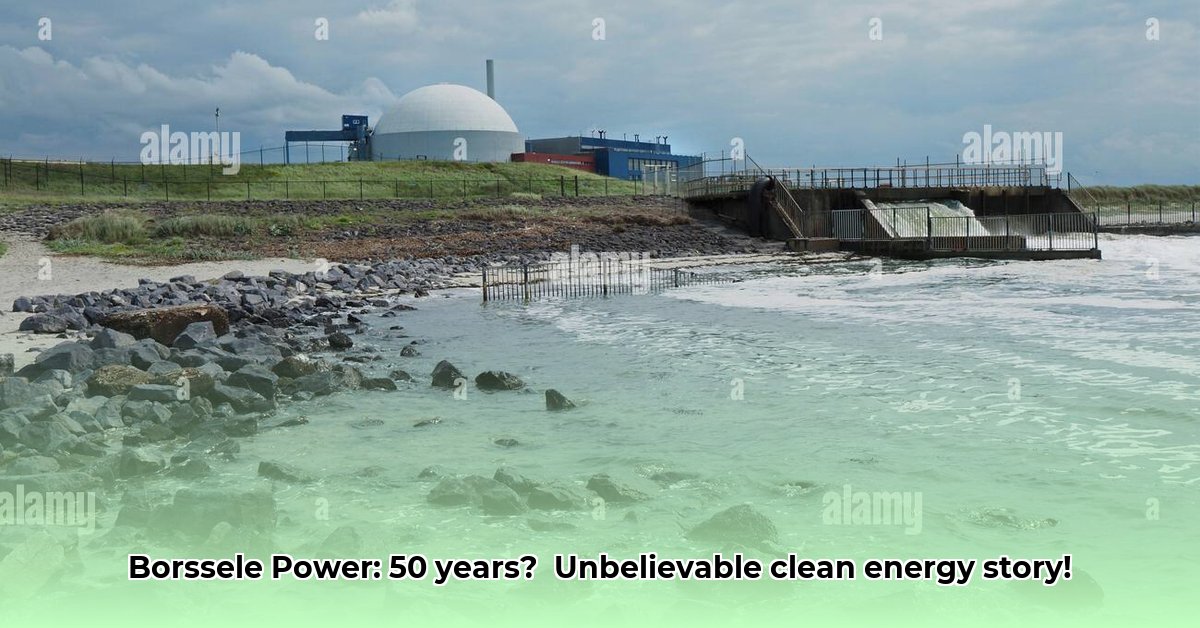
Borssele: A Dutch Energy Story
Borssele, a name synonymous with energy in the Netherlands, celebrates 50 years of power generation. This article explores its evolution, from its established nuclear plant to its impressive offshore wind farms, highlighting the interplay between legacy and innovation in the country's energy transition.
Borssele's Nuclear Past: A Legacy of Power
For over 50 years, Borssele's nuclear power plant has generated approximately 172 million megawatt-hours (MWh) of electricity. This substantial output has significantly contributed to the Netherlands' energy needs. Upgrades in 1997, following international safety concerns, modernised the plant, boosting its capacity to 485 megawatts with a new steam turbine. Since 2019, the plant utilises mixed oxide fuel (MOX) – a blend of nuclear fuels – potentially increasing efficiency. However, MOX fuel production results in approximately 4.5 cubic meters of high-level radioactive waste annually, necessitating careful long-term management. The plant's future role in a renewable-focused energy landscape is currently under discussion. Is the continued operation of the nuclear plant consistent with the Netherlands' long-term sustainability goals?
Borssele's Wind-Powered Future: Harnessing the North Sea
The Borssele III and IV offshore wind farm, a €1.3 billion investment, significantly contributes to a cleaner energy future. This project generates an impressive 3,000 gigawatt-hours (GWh) of electricity annually – enough to power thousands of homes – from the North Sea's wind. This demonstrates the Netherlands' commitment to renewable energy and significantly alters the regional energy landscape. How effectively does this large-scale wind farm integrate into the national grid?
Borssele: Balancing Old and New Technologies
Borssele exemplifies the complexities of energy transition. The established nuclear plant, providing reliable power for decades, faces a new challenge from the rapidly expanding offshore wind sector. While nuclear power offers consistent energy generation, concerns remain about waste management and accident risks. Offshore wind, arguably a cleaner alternative, presents challenges in terms of initial investment and dependence on fluctuating wind conditions. Borssele's energy mix highlights the challenges of managing established infrastructure while embracing new technologies. This situation reflects the global transition and highlights crucial considerations for nations transitioning to renewable energy sources.
Borssele: A Direct Comparison
The following table contrasts the nuclear plant and offshore wind farm:
| Feature | Borssele Nuclear Plant | Borssele Offshore Wind Farm (III & IV) |
|---|---|---|
| Energy Source | Nuclear Fission | Wind Power |
| Capacity | 485 Megawatts | 731.5 Megawatts |
| Annual Energy | Approximately 172 million MWh | 3,000 Gigawatt-hours |
| Initial Investment | Not applicable (operational since 1973) | €1.3 billion |
| Environmental Impact | High-level radioactive waste production | Minimal environmental impact |
This comparison underscores the transformative shift toward cleaner energy sources. The future likely involves careful management of the existing nuclear plant alongside maximizing the wind farm's potential. This transition presents both opportunities and significant challenges regarding investment, planning, and environmental considerations.
Borssele's Contribution to Dutch Renewable Energy Targets
Borssele's offshore wind farms play a crucial role in the Netherlands' renewable energy strategy. The five phases of the Borssele wind farm complex (I-V) have a combined capacity exceeding 1.5 GW, representing a significant contribution to the national renewable energy target. This large-scale investment directly increases the country's renewable energy generation capacity. What infrastructural challenges arise from integrating this significant increase in renewable energy generation?
The integration of a substantial amount of renewable energy into the national grid requires careful planning and significant infrastructure upgrades to ensure a reliable electricity supply. This requires careful attention to environmental impact assessments and appropriate mitigation strategies to minimise any negative effect on the marine ecosystem. The project also provides economic benefits through job creation in the offshore wind sector and paves the way for future investment and innovations. Future expansion and the incorporation of advanced technologies will further enhance the renewable energy capacity.
Key Takeaways:
- Borssele's wind farms significantly contribute to the Netherlands' renewable energy targets.
- The project's large-scale capacity boosts the nation's green energy generation.
- Grid infrastructure upgrades are crucial for integrating renewable energy reliably.
- Environmental impact assessments and mitigation are vital for the project's sustainability.
- Borssele creates economic opportunities through job creation and future investment.
- Future expansion and technological advancements promise continued growth in the sector.